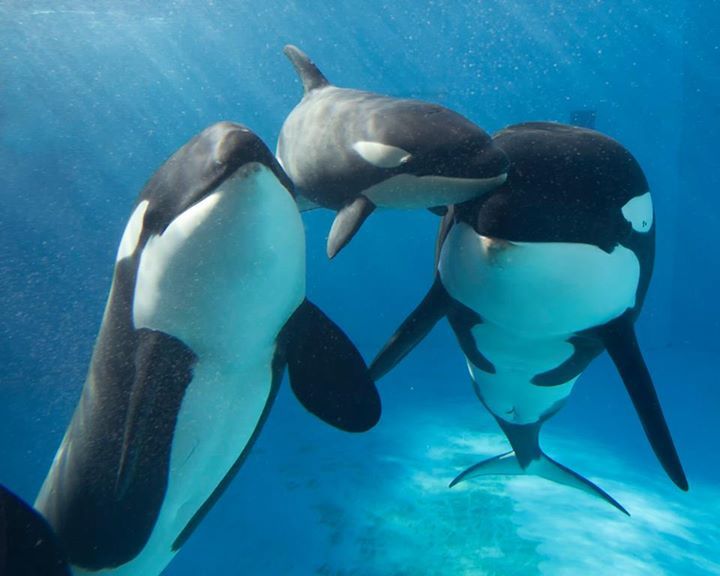
Welcome!
This site provides educational and insightful information regarding various issues surrounding dolphins, whales and porpoises (collectively known as cetaceans) with a particular focus on cetacean captivity.
Captivity Causes Abnormal Behavior
As seen with other highly intelligent animals such as apes and elephants, cetaceans often exhibit stereotypical or abnormal behaviour. Repetitive in nature, this behaviour has no obvious goal or function and is thought to be a result of boredom, distress, and frustration related to an unnatural environment. As a cetacean's natural repertoire of behaviours cannot be satisfied in a barren concrete tank, they may try to reduce the resulting tension by developing destructive behaviours such as self-stranding for prolonged periods of time, biting on metal gates/chewing at the environment, vomiting and self-mutilation, or non-beneficial behaviours such as comatose-like states/lethargy, head bobbing and pacing/circling.
In Captivity, orcas are fed unnatural diets
In their wild habitat, orcas spend between 65% to 90% of daylight hours foraging and hunting for food. However, in captivity, orcas are stripped of the ability to forage and given no opportunity to hunt live prey. Instead, they are hand fed a diet of frozen fish which has a lower water content than fresh fish due to freezing and thawing processes, leading to chronic dehydration. Orcas are the ocean's top predators, capable of killing anything from fish to birds and sharks to baleen whales. Orcas have also developed sophisticated hunting techniques, many of which co-operative, to successfully prey on more than 140 species of animals.
